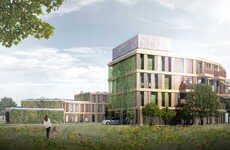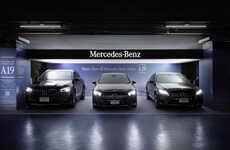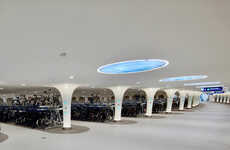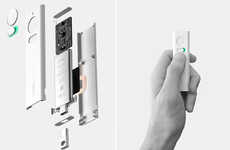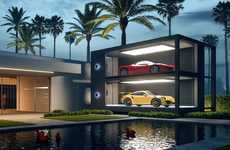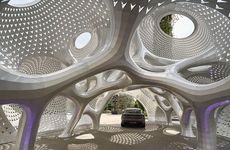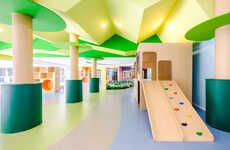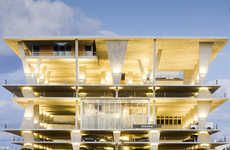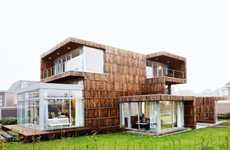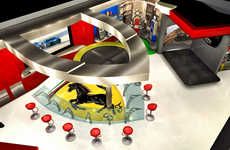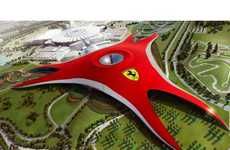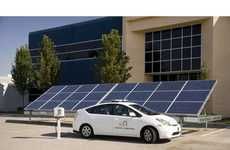
The Compressive Parking Lot Creates an Interation Between Car and Building
Meghan Young — May 25, 2011 — Autos
References: evolo.us & designbuzz
At first glance, the Compressive parking lot does not look like a car parking structure. Of course, once you take into consideration that the Compressive parking lot is located in Abu Dhabi, a city known for its car culture, you won't be surprised that a whole skyscraper structure was conceived to serve just vehicles.
Designed as part of the advanced Exotic Variables and States of Change studio led by Thom Faulders at the California College of the Arts, the Compressive parking lot is an interactive creation that feeds off of the relationship between car, driver and building.
Essentially, the Compressive parking lot can actually sense the weight of each car so that when enough of them are parked, the floor itself compresses. Pedestrians also benefit from this compression since the surrounding areas of their paths can become on-the-spot speed bumps to regulate car speeds.
Designed as part of the advanced Exotic Variables and States of Change studio led by Thom Faulders at the California College of the Arts, the Compressive parking lot is an interactive creation that feeds off of the relationship between car, driver and building.
Essentially, the Compressive parking lot can actually sense the weight of each car so that when enough of them are parked, the floor itself compresses. Pedestrians also benefit from this compression since the surrounding areas of their paths can become on-the-spot speed bumps to regulate car speeds.
Trend Themes
1. Interactive Car Parking - The Compressive parking lot in Abu Dhabi demonstrates the trend of creating interactive parking spaces that engage with the car, driver, and building.
2. Sensory Technology - The use of weight-sensing technology in the Compressive parking lot highlights the trend of incorporating sensors in parking structures to enhance functionality and efficiency.
3. Multifunctional Spaces - The Compressive parking lot's ability to create on-the-spot speed bumps showcases the trend of designing parking structures that serve multiple purposes and benefit pedestrians.
Industry Implications
1. Architecture and Design - Architects and designers can explore the development of interactive and innovative parking structures like the Compressive parking lot to enhance user experience and optimize space usage.
2. Automotive - Automakers could incorporate weight-sensing technology from the Compressive parking lot to create smarter, more efficient vehicles that can interact with parking infrastructure.
3. Smart City Solutions - Companies specializing in smart city solutions can leverage the concept of multifunctional parking structures like the Compressive parking lot to improve urban mobility and enhance pedestrian safety.
2.2
Score
Popularity
Activity
Freshness

